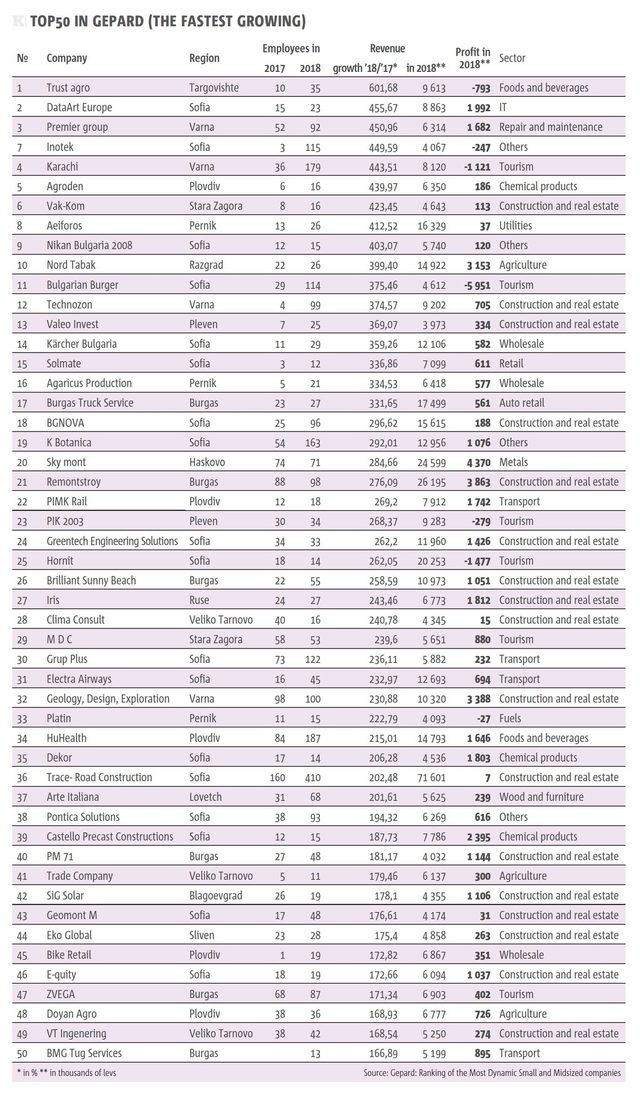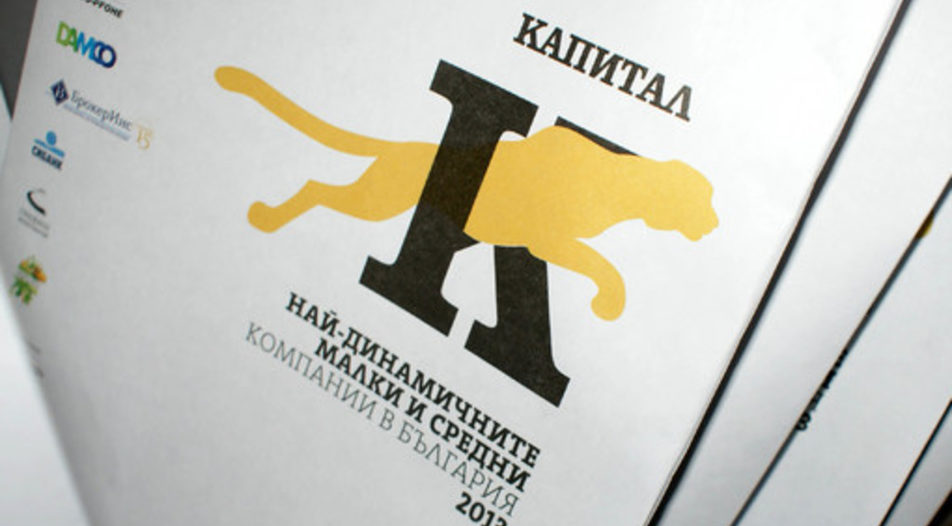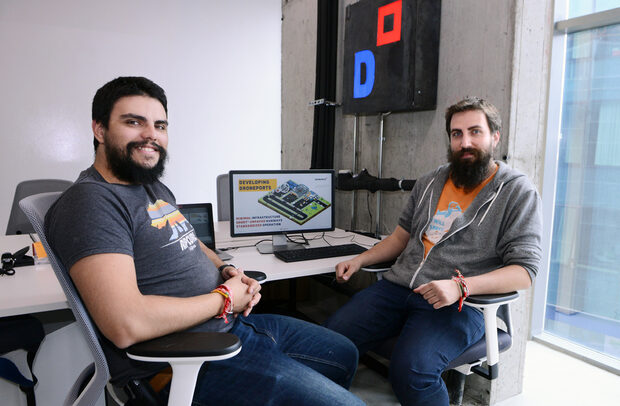Plovdiv has become the industrial centre of Bulgaria and its significance is increasing by the year
The differences between regions keep widening and the northern part of the country is lagging considerably behind the south.
Small and midsize businesses (SMB) recorded a second strong year in a row. The revenues of the best of them increased by an impressive 30% in 2018, while their profits topped 2 billion levs. The annual Gepard ranking for the most dynamic SMBs (with the highest increase of revenues) contains more than 2200 companies, which is a clear sign that the spine of the Bulgarian economy has stabilized and achieved improved results.
The successful performance came on the back of strong growth of GDP - 3% in 2018. Bulgaria's GDP was close to 110 billion levs for the first time; investments and household purchases have increased as well. This year, however, the situation might change in the context of the considerable slowdown of the EU economy and concerns that it may enter a recession. Since the EU is Bulgaria´s principal trade partner, a looming recession in Germany or France will inevitably hit Bulgaria's businesses as well.
Five-year peak
The ranking comprises SMBs that recorded revenue growth in 2018. While there were record 1780 companies in the Gepard ranking in 2017, in 2018 the entrants increased by over 25%, reaching 2267. The revenues of the most dynamic SMBs surpassed an impressive 32 billion levs (29.8% of the 2018 GDP) - an increase of over one-third from 2017 and two-thirds in respect to 2016. The net profits were record-high - 2.01 billion levs, while assets grew to 23.4 billion levs.
The Top 10 ranking of 2018 includes companies from ten different sectors, as compared to 8 and 7 in the previous two editions. Six of the companies are from the traditionally most developed regions of the country in the past few decades - three from Sofia, two from Varna and one from Plovdiv. This concentration, however, brings its own share of challenges. The three business centres were also leaders during communist times and the ranking of 2018 reveals an even deeper divide between the northern and southern regions of the country.
Plovdiv's attractiveness grows
Plovdiv has definitely become the industrial centre of Bulgaria and its significance is growing each year. Its industrial zones draw dozens of international companies along with domestic ones. The city was one of two venues proposed by the government as a site for the planned new plant of global world automotive leader Volkswagen, a contest that was ultimately lost to Turkey. Currently, it is among the options for the construction of a South Korean plant for the manufacture of electric car batteries. The region is represented by 245 companies in this ranking. It had 180 in the previous one and its share has grown by 11%.
Sofia will remain number one for a long time to come. The present number of Sofia-based companies in the ranking is 874, or 39%, and is likely to remain so permanently. In practice, this means that almost half of the most dynamic SMBs are based on the two leading Bulgarian business centres. Once we add Varna, Burgas and Stara Zagora, it becomes clear that two-thirds of successful SMBs in Bulgaria hail from five regions in the country, four of which are located south of the Balkan range.
The bad news is that in addition to the traditionally depressed northwest, the northeastern part of the country is permanently settling in the same category. The three regions least represented in the ranking are Montana, Razgrad and Targovishte. Their combined share amounts to ... 0.021%. They are followed by Vidin (interestingly enough, the most successful textile company in the ranking is based there), Silistra and Kyustendil, which only emphasizes northern Bulgaria's lag.
The situation becomes even more alarming when we consider that the bottom ten regions (out of a total of 28 in Bulgaria) host only 0.087% of the companies in the ranking. Eight of these ten are also the smallest and they are characterized by weak economic activity and decreasing population. After twelve years in the EU, we can be categorical that regional disparities in Bulgaria have widened and the northern part of the country has dramatically fallen behind the southern part.
The EU's regional competitiveness index (RCI) shows that Bulgaria's northwestern region is the ninth least competitive in the Union. The bottom includes a few Greek regions as well. Over the last three years, Bulgarian regions have increased their competitiveness slightly faster than their Greek or Romanian counterparts. Nevertheless, the higher position of the Bulgarian regions in respect to the Greek ones is due to the "macroeconomic stability" factor, without which they would have been at the bottom. All regions in the country except the southwest (thanks to the Sofia effect), are in the index's lowest category.
The director of the European Commission's Regional and Urban policy department Marc Lemaitre comments that Bulgaria has high levels of macroeconomic stability but that is yet to translate into more competitive regions.
The leader of the ranking
The Top 3 is composed of sectors that offer the highest added value. The leader is Trust Agro, which processes oil-bearing and essential oil crops. The company increased its revenue seven-fold in the past year to reach 9.6 million levs. This considerable growth was possible after a new production plant financed by the European rural area development program was opened. The plant in Belomortsi, in the Omurtag region, has a yearly capacity of 30 000 tons. The modernization allows for the purity of at least 99.9% of oils extracted from both the main crop coriander and peeled sunflower seeds. The technology is waste-free since animal feed pellets are made from the leftovers. The production is mostly exported and the revenue increase was helped by higher market prices.
The runner-up is DataArt Europe, the Bulgarian subsidiary of global technology consultancy DataArt. The company is a traditional software outsourcing enterprise and it makes products according to client specifications. The reason for the exceptional growth of 456% last year, or nearly 8.9 million levs, is that the company consolidated all its European operations in the Bulgarian subsidiary.
The decision was made based on Bulgaria's improving IT sector environment which DataArt characterized as an "exceptionally good place for an IT company to open a development centre". After the Bulgarian subsidiary became the European headquarters, it also started functioning as a commercial office, which has improved the company's cash flow.
The international company DataArt creates new products and modernizes complex systems in different sectors such as finance, health, tourism, media, gambling and gaming and IoT. It employs over 2500 individuals in 20 offices and development centres in the US, Europe and South America. Last year, the company's revenue reached a record of 140 million dollars.
The Top 3 is completed by the Varna-based Premiere Group, which specializes in the construction and repair of ships. Its revenue for 2018 jumped by 450%, reaching 6.3 million levs. In 2017, the company performed finishing and high tech adjustments on the Norwegian vessel Cecon Excellence. The ship is used for servicing oil rigs, underwater construction and installations, diving operations or as a probe. In 2018, the company signed a cooperation agreement with Croatia's Viktor Lenac Shipyard, where it performs assembly on a variety of vessels. The partners of the Premiere Group include shipyards and repair facilities from the US, Norway, Poland, France, Greece, The Netherlands, Denmark and Romania.
The other companies in the Top 10 also reported considerable revenue increases to the order of over 400%. The biggest revenue of 16.3 million levs was earned by the waste recycling company Aeiforos Bulgaria, a subsidiary of Stomana Industry.
Total sector shift
The sector-by-sector analysis of the 20 fastest growing companies reveals that the better represented are those offering high added-value products. The most profitable sectors were pharma with 61 million levs, high tech with 55.7 million levs and machinery manufacture with 24.4 million levs.
The largest revenues of slightly over 355 million levs were earned by companies in the sector of the automotive trade, spare parts and servicing. They are followed by pharmaceutical companies with 338.8 million levs and agricultural enterprises with 334 million levs. It is worth mentioning that in the previous year, the Top 3 was composed of companies from transportation, fuel refining and retail and metal works, all of them with lower revenues than the present leaders. The lowest revenues were earned by companies in the food industry, tourism and textiles.
The other important financial indicator - the profit margin, once again sees companies from the high tech sector fly far ahead with a profitability rate of 23%. They are followed by pharma with 18% and food manufacturers with 13.3%. On the opposite side stand furniture companies, fuel retailers and tour operators, who operate on margins between 1% and 2%.
For the third year in a row, the companies from the construction sector and retail reported the largest revenue increase - by 211% and 124%, respectively. They are closely followed by tourism and high tech with 117% and 110%.
It is worth noting that according to the main indicators, tech companies have an increasingly larger presence among the most dynamic enterprises. The analysis of market research agency CBN Pannoff, Stoytcheff & Co shows that according to preliminary data, the information technology sector had its most successful year in 2018, both in terms of revenue and jobs created. Another tendency mentioned in the analysis also stands out - in addition to the boom of new employment opportunities in the Plovdiv and Varna regions, the sector has also created jobs in less developed regions such as Vidin and Vratsa, as well as regions where the industry still has a very limited presence like Kardzhali and Smolyan.
Two steps forward, one step back
The structure of the Bulgarian economy is similar to that of the entire EU - 99.8% of the companies are small or midsize and they employ nearly two- thirds of the workforce. The October announcement that Bulgaria has climbed in the Top 50 most competitive and innovative economies in the world can be interpreted as a ray of hope. The country advanced two spots to number 49 out of a total of 141 countries in the yearly Global Competitiveness Index report by the World Economic Forum. This slight improvement is due to the higher marks for labour market flexibility, the performance of government institutions and economic stability.
At the same time, the report also showed deteriorated health indicators of the population, as well as continuing bad results in terms of combating organized crime, improving road infrastructure and the availability of qualified personnel.
Warning shots
The Bulgarian economy has slightly slowed its growth to 3.3% in the second quarter, following the trend in rest of Europe. Similar to the first three months of the year, all the growth indicators were present but the tempo of consumption growth began to slow down as well, much as most analysts had predicted. The big question at the moment is whether the leader of the European economy - Germany, will enter a recession, with the potential affirmative answer generating plenty of anxiety.
The contribution of net exports was positive for a second quarter in a row when factoring in the yearly fluctuations and decreased imports. As a proportion of GDP, investments have slowed both on a quarterly and yearly basis, with some analyzers forecasting that this may be compensated for in the second half of the year because of the local elections. The increase in consumption has also dropped on a yearly and quarterly basis (2.7% in the second quarter and 4.5% in the first on annual basis).
Another element of concern to businesses is that after five years of decreasing company bankruptcies, the number has started to grow again and the perspective for the next two years is that the situation will continue to deteriorate. The challenges faced by companies in terms of increased labour costs, shortage of qualified personnel and decreased demand for their products from their European clients will affect their ability to keep up with the frequency of credit repayments, thus threatening their very existence. An analysis by the specialized export insurance companies Coface and Euler Hermes show that 82 000 businesses are at a high risk of becoming insolvent, with the most at-risk sectors being retail and wholesale, hotels and transportation. According to Coface's data, the 15.8% increase in bankruptcies in Bulgaria last year was the third-highest in Europe after Croatia and Poland.
Euler Hermes point out to intercompany indebtedness, which, according to their latest analysis, is displaying alarming global tendencies as a result of the world economy's stagnation. Increased tensions between the USA and China have also caused trade to slow down. All this inevitably has its impact on Bulgaria, with forecasts predicting economic growth deceleration and a risk factor increase.
Bulgaria's traditional export partners from the EU are also expected to experience a slowdown. The company emphasizes that the most serious tensions have been observed in the retail, metals, construction and automotive sectors which all have a bearing on Bulgarian manufacturing and the economy.
The short term perspective for growth decline and even a shrinking of the economy depends chiefly on the global cycle where Bulgaria's small and open economy can have very little influence. It is up to the government and the business community to develop a pattern for convergence with developed EU countries in terms of productivity and innovation, education and scientific research. And if Bulgaria's capability for capital investment is limited, the country will have difficulties making significant progress in its development.
Methodology
To be part of the ranking, a company must:- have reported revenue growth for two years in a row;
- fit the law-mandated definition for SMB and have earned between 3.9 and 97.5 million levs in 2018;
- be privately owned;
- not be a financial, health-care or gambling entity

Plovdiv has become the industrial centre of Bulgaria and its significance is increasing by the year
The differences between regions keep widening and the northern part of the country is lagging considerably behind the south.
Small and midsize businesses (SMB) recorded a second strong year in a row. The revenues of the best of them increased by an impressive 30% in 2018, while their profits topped 2 billion levs. The annual Gepard ranking for the most dynamic SMBs (with the highest increase of revenues) contains more than 2200 companies, which is a clear sign that the spine of the Bulgarian economy has stabilized and achieved improved results.












